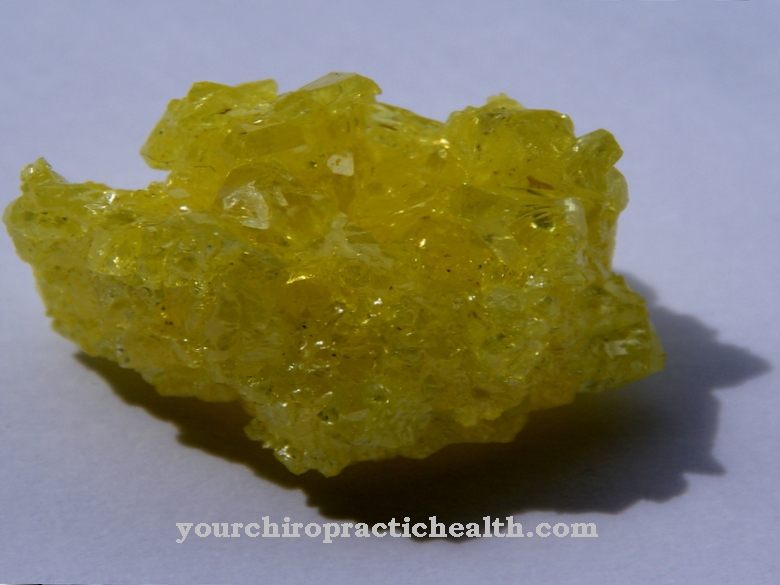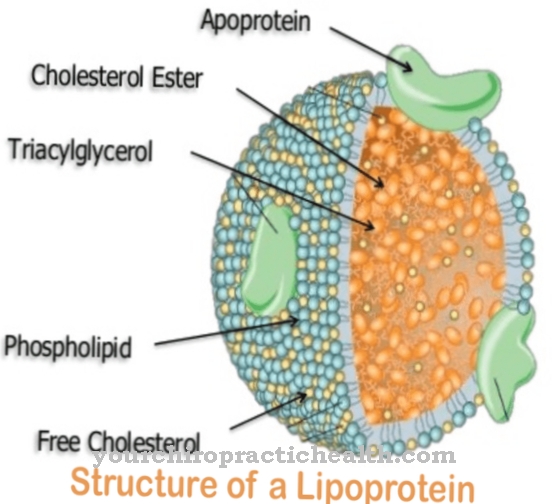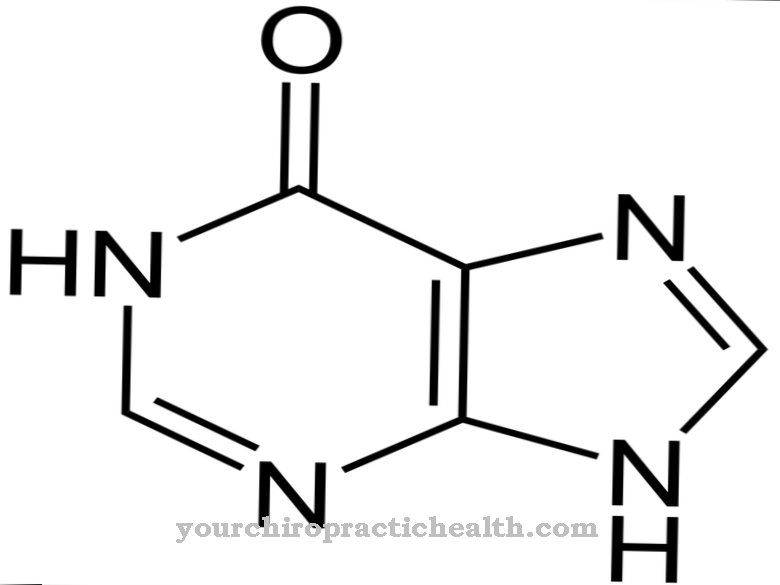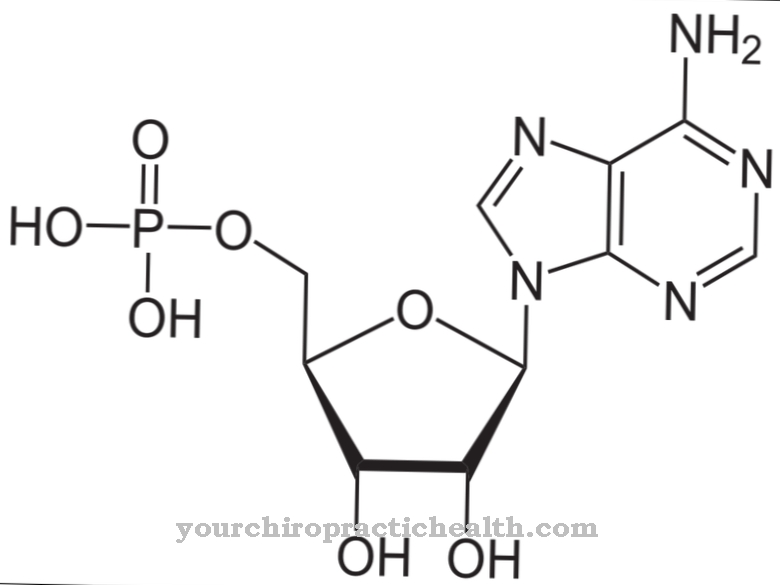The human chorionic gonadotropin (hCG) is a pregnancy hormone that helps maintain pregnancy. The pregnancy test is based on the detection of this peptide hormone. Outside of pregnancy, an increased concentration of chorionic gonadotropin indicates specific cancers.
What is Human Chorionic Gonadotropin?
As a rule, human chorionic gonadotropin is only produced in high concentrations during pregnancy. It is a peptide hormone made up of two subunits that is responsible for maintaining pregnancy. It is produced in human syncytiotrophoblasts. The syncytiotrophoblasts represent part of the placenta.
The peptide hormone is a glycoprotein and consists of an alpha subunit with 92 amino acids and a beta subunit with 145 amino acids. The alpha subunit is also abbreviated as α-hCG and the beta subunit as β-hCG. Α-hCG also occurs as part of other hormones such as thyrotropin (TSH), follicle-stimulating hormone (FSH) or luteinizing hormone. However, the beta subunit (β-hCG) is only a component of human chorionic gonadotropin. During pregnancy, the concentration of this hormone increases continuously up to the 10th to 12th week of pregnancy.
Then the gradual decline in the production of chorionic gonadotropin begins. Shortly before the 20th week of pregnancy, the concentration of human chorionic gonadotropin reaches a certain basal value, which remains until shortly after birth. After that, the production of this hormone almost completely stops. However, if higher concentrations of human chorionic gonadotropin are detected outside of pregnancy, this is an indication of carcinomas of the trophoblasts, ovaries, testes, liver, kidneys or even the lungs.
Function, effect & tasks
The job of human chorionic gonadotropin is to maintain pregnancy. It prevents re-ovulation and menstrual bleeding during pregnancy. This is achieved by the fact that the human chorionic gonadotropin stimulates the corpus luteum in the ovary to produce progesterone.
Progesterone builds up the lining of the uterus and at the same time signals the pituitary gland to stop ovulating during pregnancy. The corpus luteum persists during pregnancy and can continuously produce progesterone during this time. It develops into the corpus luteum graviditatis. The degeneration of the corpus luteum is prevented. Up to the 10th week of pregnancy the corpus luteum graviditatis forms the pregnancy-maintaining hormones progesterone and estrogen under the influence of human chorionic gonadotropin. The placenta then takes over this task, with the need for chorionic gonadotropin slowly decreasing again. The increased production of human chorionic gonadotropin begins around the fifth day after fertilization.
Initially, a hyperglycosylated form of the hormone is formed, which is necessary for the blastocyst to implant. As a result of the contact of the blastocytes with the uterine mucosa, the trophoplast cells differentiate and the formation of the active form of human chorionic gonadotropin begins. The active human chorionic gonadotropin then stimulates the corpus luteum as described above.
Education, occurrence, properties & optimal values
The formation of human chorionic gonadotropin takes place in the multinucleated syncytiotrophoblasts of the placenta. The multinucleated syncytiotrophoblast arises from the differentiation and profiling of some mononuclear cytotrophoblast cells of the blastocyst. At first, the production of the hormone is low. However, it increases continuously from the fifth day of pregnancy. There are phases in pregnancy in which the production of human chorionic gonadotropin doubles daily.
The normal level of hCG in the blood in men and non-pregnant women is up to 5 IU / liter.After the menopause, the normal value in women increases to 10 IU / liter. As already mentioned, the rapid increase in the concentration of hCG begins on the fifth day after the egg cell has been fertilized. In the third week of pregnancy, for example, the value has already risen to just under 50 IU / liter. In the fourth week of pregnancy a value of up to 400 IU / liter can be recorded. The maximum concentration of human chorionic gonadotropin of approx. 230,000 IU / liter is reached in the tenth to twelfth week of pregnancy.
The concentration of hGC then slowly decreases again and reaches a value between 5000 and 65,000 IU / liter at the end of pregnancy. By no later than the 17th day after pregnancy, the concentration of human chorionic gonadotropin has dropped back to normal. As part of the pregnancy test, the course of pregnancy can therefore be followed on the basis of the changes in the concentration of the hormone.
Diseases & Disorders
The determination of the concentration of human chorionic gonadotropin is of great diagnostic importance. First of all, it serves as evidence of pregnancy and its course. However, a false pregnancy can also be indicated. In this case, human chorionic gonadotropin is increased.
The cause of increased values can also be a carcinoma of the ovaries, testicles, trophoblasts, kidneys, liver or lungs. If the levels are even higher during pregnancy, there may be a multiple pregnancy or an abnormality in the number of chromosomes. A child's Down syndrome is also indicated by an even greater concentration of human chorionic gonadotropin. However, if the concentration increases slowly during pregnancy and does not reach high levels, it may be an fallopian tube or ectopic pregnancy.
Furthermore, low pregnancy concentrations of hCG can also indicate an abortion due to a miscarriage, death of the fetus, a missed abortion (not ejected but dead fruiting), an impending premature birth or a gestosis. The human chorionic gonadotropin can also be used as a medicament in the case of a lack of menstruation, undescended testicles or infertility.









.jpg)



.jpg)



.jpg)







.jpg)


